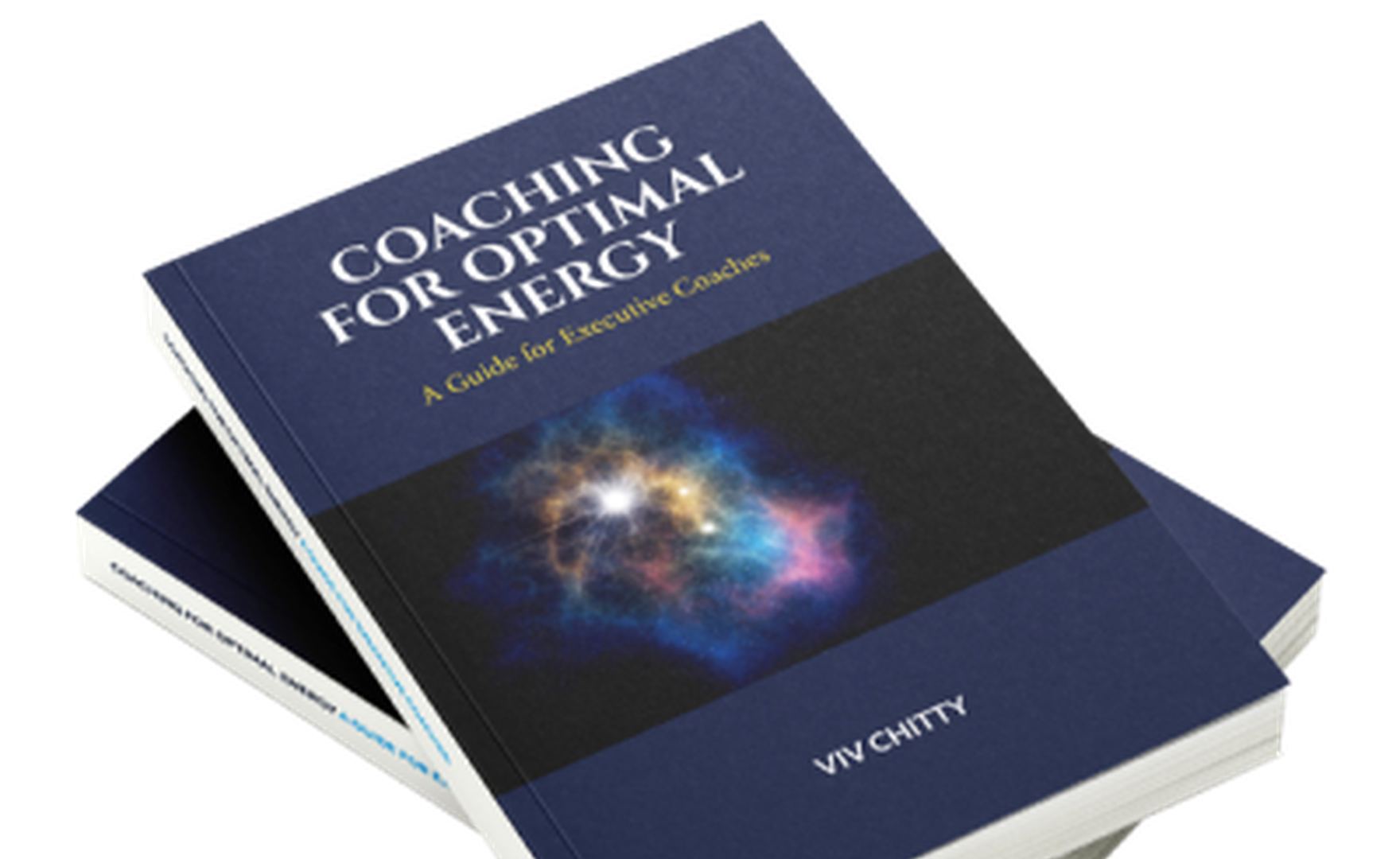Article
“Why am I such a loser!” – Time to change the narrative
22nd July 2024 by Karen Smart
The above is one of many horrible things I might say to myself on a bad day, or when I…

Would you know how to address energy levels in your clients if you thought it was necessary? A few years ago, I didn’t.
I started executive coaching in 1998 and have specialised in coaching senior executives. About ten years ago I found myself becoming increasingly aware of differing energy levels in my clients: some had appropriate levels to cope well with their working life and others had problematic energy levels and were at times struggling to meet the demands being made on them.
When energy is suboptimal a person’s performance, behaviour and interactions with others can suffer. There may be an impact on their emotions and cognition and there can be a knock-on effect on the individual’s team and organisational culture. And, if the individual has a coach, it can influence the efficacy of their coaching.
Whereas research has indicated that being appropriately energised, having Optimal Energy®, has numerous benefits not only related to performance and productivity i, ii but to the ability to inspire others iii, career success, work and life satisfaction iv, health and wellbeing v, vi and higher levels of creativity.
So much is expected of our executive coaching clients and it is suggested that managing complex organisations is now even harder now than it was just a few years ago vii with many leaders having to manage organisational changes such as restructuring, redundancy programmes and digital transformation.
I decided to look into the subject of ‘energy’ and found very little around apart from self-help books. I found the meaning of ‘energy’ in all the literature was implied but not explained nor based on research. There was one book which introduced the concept of ‘energy management’ by Dr Jim Loehr and the journalist Tony Schwartz who argued that energy, not time, is fundamental for high performance viii. But I wanted to see the research to back up their ideas and the book did not answer my question regarding what I could do as a coach.
Meanwhile, I began to actively address energy with the clients for whom energy levels seemed to be an issue. I also used these strategies myself and found them effective at a time of life when many demands were being made of me. However, my interventions were not based on academic research. I also started to wonder if it was just me who saw the influence that energy levels had on clients - were other executive coaches addressing energy levels in coaching and, if so, how? In the end, I decided that I wanted to research the subject properly and I embarked on a Masters in Coaching and Mentoring Practice at Oxford Brookes University to do so – this was the focus of my research dissertation. In my interviews with fellow executive coaches I discovered that they did think it was relevant to work with energy and the concepts and models of practice were formed based on this sharing of experience. After finishing the MA, I spent the following four years looking into this further and the end result was my book Coaching for Optimal Energy: A Guide for Executive Coaches. The book is full of anecdotes and case studies from my colleagues.
This is the first time that energy has been researched and written about for executive coaches and coach supervisors. The book:
Working with clients to address energy has many implications and exploring these in any detail is beyond the scope of this article. But here are a few points:
Are we doing our clients a disservice if we do not consciously assess whether their energy levels are appropriate for what they are trying to achieve and help them to address this if the need is there?
Our deepest thanks to Viv for allowing us to share more about Coaching for Optimal Energy.
Viv Chitty is director of Viv Chitty Associates, a coaching consultancy which works with senior people in a wide variety of sectors. She has been an executive coach for over 20 years and is a coach supervisor. She is passionate about working with senior clients who have multiple challenges to face. Amongst other qualifications in psychology, counselling, and coach supervision, she holds a MA in Coaching and Mentoring.
References
Article
22nd July 2024 by Karen Smart
The above is one of many horrible things I might say to myself on a bad day, or when I…
Article
22nd July 2024 by Lee Robertson
Plotting a course through the complexity, rapid change, uncertainty and overwhelm of today’s business climate requires a fundamental approach –…
Article
22nd July 2024 by Lee Robertson
Recent research, such as the Atlassian State of Teams 2024 report, reveals that teams are busier than ever but are…